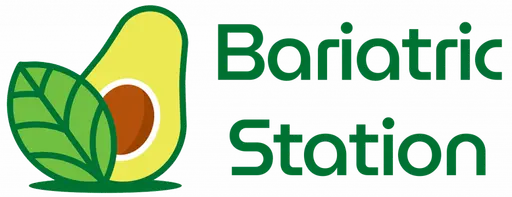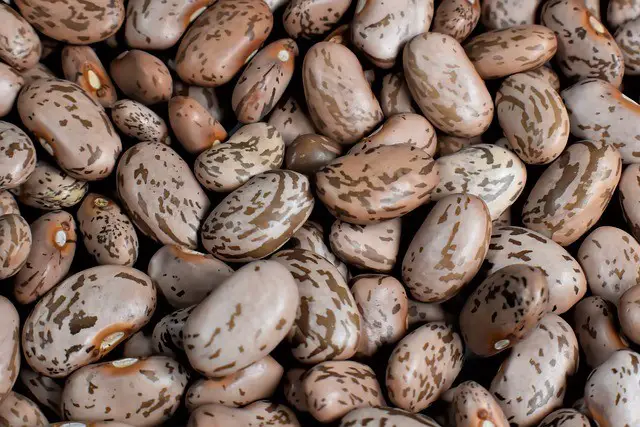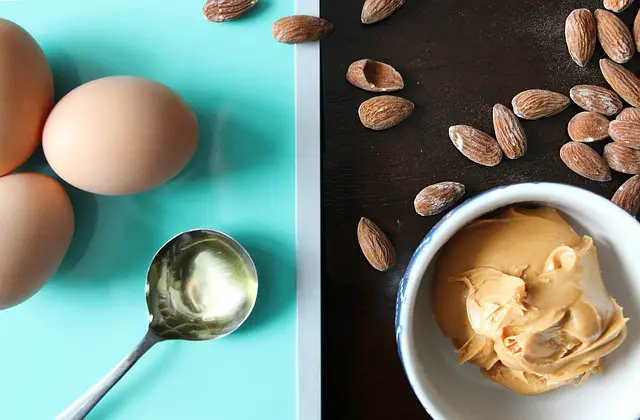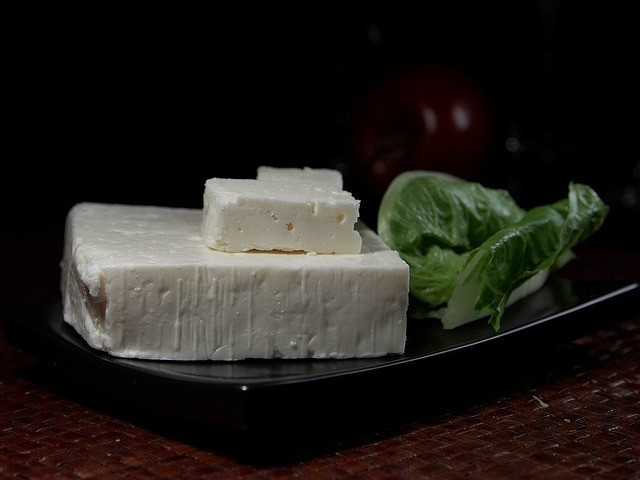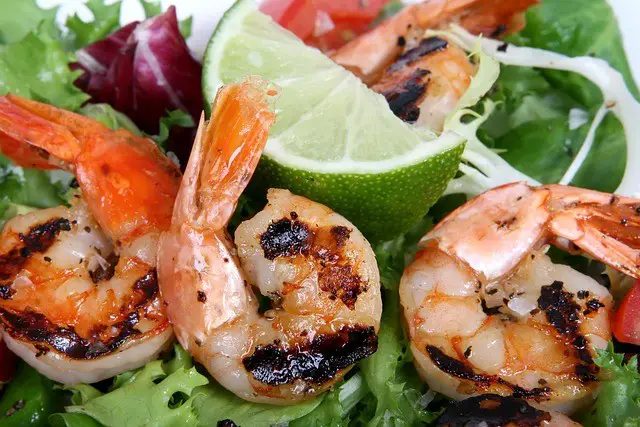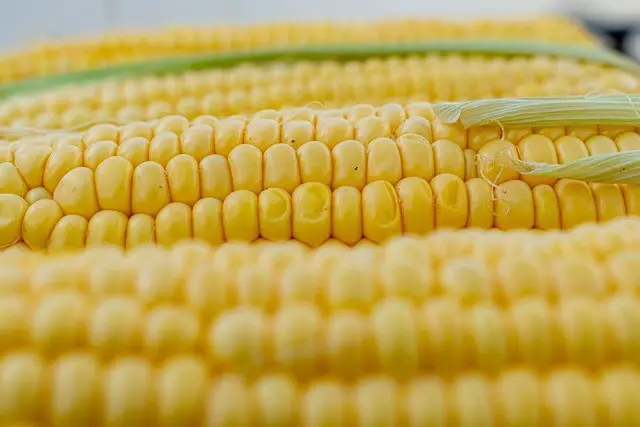So much has been said about the ketogenic diet and its success stories are all over the internet. Low-carb diets have gained popularity over the years for weight loss, and now people are following them for other health benefits. I’m not surprised that after all you have seen and heard, you want to jump on the keto diet train and reduce your carb intake.
A lot of information is out there concerning how to eat on a keto diet and what not eat to eat while on a low-carb diet. It can get confusing for readers at times, especially if you are pulling information from different sources with contradicting opinions. You need not worry; your keto diet health coach is here to help!
This will be your ultimate keto diet guide, with all the information you need to know on lowering your carb intake. In this guide, you will learn what low-carb diets are, what a ketogenic diet is, the rules of eating keto, the health benefits of reducing your carbohydrate intake, the low-carb foods you can eat, and what to avoid on keto. I will also answer your most frequently asked questions on low-carb intake. Let’s get to it!
Low Carb Diets Overview
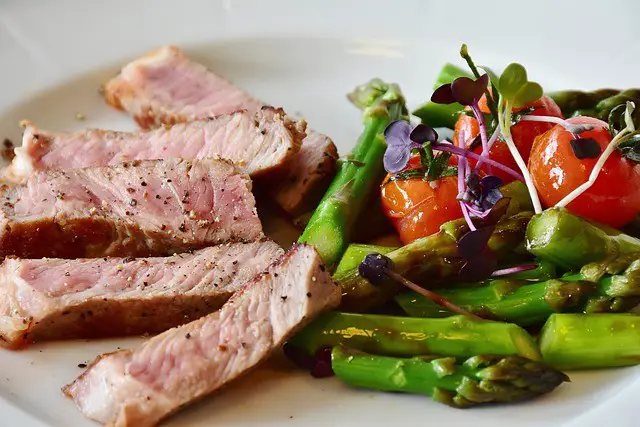
A low-carb diet restricts carbohydrate intake and gets most of its calories from protein intake and fat intake. The type of fat consumed in low-carb diets is healthy fats. Carb intake is restricted to as low as 20 g and not more than 50 g per day. The most common types of low-carb diets include:
South Beach Low Carb Diet
This type of diet focuses on how much protein you are consuming. It states that you can lose 8 to 13 pounds in the first 14 days of following this diet if you switch to eating high-protein foods and limiting high-carb foods.
There are three main meals and two snacks allowed on this low-carb diet. At the onset, you consume high protein foods like eggs, fish, beef, and poultry and low carb foods like nonstarchy vegetables.
Once you start to lose weight, you can start introducing healthy carbs like whole grains and other vegetables in to lose one or two pounds per week.
When you have reached your weight loss goals, all food restrictions are dropped, but you are still advised to consume protein-rich foods.
Atkins Diet
It is categorized as either Atkins 20 or Atkins 40 method. The former aims at losing more than 40 pounds while the latter, less than 40 pounds. Moreover, for Atkins 20, you are allowed to consume 20g to 100 g of carbs while in Atkins 40 you consume 40 g to 100 g of carbs.
How does this low-carb diet work? The phases of the Atkins diet move by gradually increasing carbohydrate intake. During the induction phase, you consume 20g to 25 g of carbs and your diet focuses on protein intake and consumption of healthy fats.
In the next phase carb intake is increased to 25 to 50 g, when you will introduce low-carb fruits, other veggies, and legumes. The final phase, the maintenance phase begins after you experience a weight loss of more than 10 pounds. Here carb intake is increased from 50 g to 80 g, and you can start eating starchy vegetables, whole grains, and high-sugar foods.
Paleo Diet

This diet focuses on the caveman’s eating habits. Your paleo meal plan eliminates whole grains, sugar, and legumes and allows seafood, broths, fruits, and vegetables. The paleo diet improves the following metabolic components: diastolic blood pressure, blood sugar, systolic blood pressure, waist circumference, and triglycerides.
The difference between Paleo and other low-carb diets is paleo does not restrict starchy veggies like root veggies.
Ketogenic diet
This is our focus of the day. The keto diet is a low-carb, high-fat diet that restricts carb intake to achieve weight loss and other health benefits.
What Is the Ketogenic Diet?
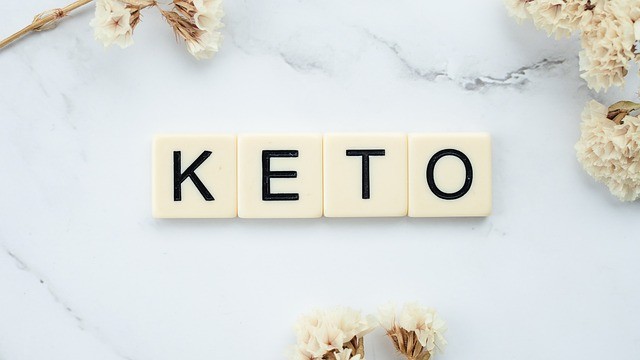
The Keto diet for beginners can be very challenging because of the dos and don’ts that come with eating keto. Simply put, the keto diet is a high-fat, low carb diet.
The interest in the ketogenic diet started when it was used in the treatment of epilepsy in children in the 1920s. Fasting and excess or limitation of food substances had been recognized as a treatment for many diseases. The study resulted in a reduction in hourly episodes of petit mal. However, the keto diet was shown to have better results than starvation.
What is the science behind restricting the intake of carbs? When you consume a high-carb diet, insulin levels rise to break down starch to glucose for energy. Once your body has converted enough glucose to energy, the rest is stored as excess body fat.
Restricting your carb intake lowers your blood sugar, meaning your body has to find an alternative source of fuel. The switch to breakdown fats in storage due to inadequate glucose in the body is what makes the keto diet effective for weight loss. This fat metabolism is what we are calling ketosis.
What is Ketosis?
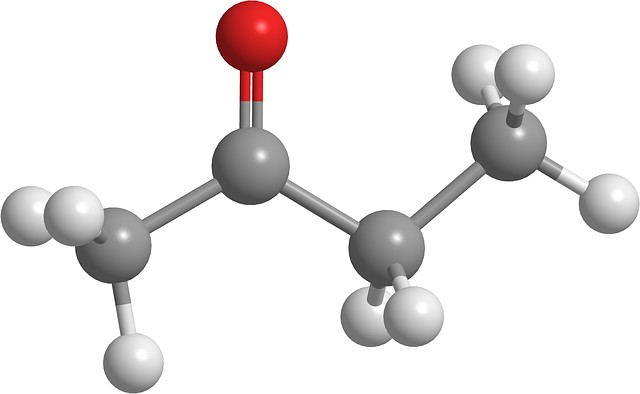
Ketosis refers to the breakdown of body fat and dietary fat to produce ketones as an alternative source of fuel, in the absence of glucose. Since a ketogenic diet limits your carb consumption, your body is deprived of glucose, which forces it into a state of ketosis.
It is important to mention that nutritional ketosis is different from ketoacidosis. Nutrition ketosis is beneficial while ketoacidosis can be life-threatening. For ketosis to be triggered glucose and insulin levels have to be low, to enable your body to break down fat to increase ketone levels that can be used to fuel your body. Fat oxidation helps you lose weight and leads to other benefits, including burning body fat.
How Do You Trigger Ketosis?
The Keto diet for beginners should focus on the body achieving a state of nutritional ketosis to lose weight. What can you do to help your body enter a state of ketosis?
Limit Carbohydrate Consumption
To achieve ketosis, your body has to be deprived of glucose. Carbohydrates when digested produce glucose that spikes your insulin levels. High blood sugar and insulin levels inhibit nutritional ketosis. The ketosis diet limits carb intake to 20 g-50 g per day, forcing your body to digest fat to produce ketones for energy.
Pay attention to the number of net carbs you consume on your keto diet so as not to exceed the recommended carb limit. Net carbs refer to the digestible carbs you consume and are gotten by subtracting dietary fiber from your total carbs.
Moderate Protein Intake
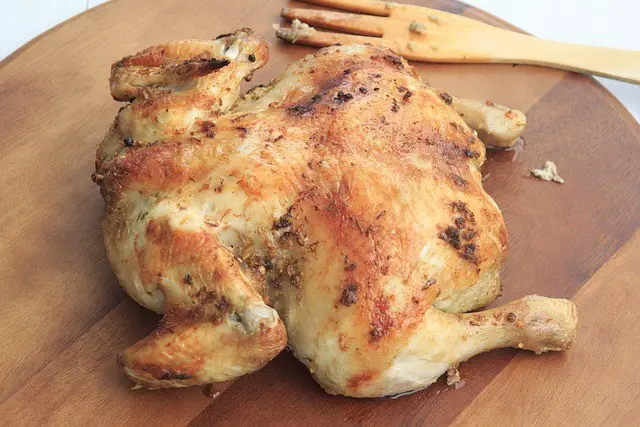
Although you are advised to eat animal proteins, too much protein can slow down and inhibit ketosis. This is because since your body can’t store protein, excess of it is broken down to produce blood glucose for energy through gluconeogenesis or stored as fat. The conversion of proteins to glucose increases insulin levels which slows down ketosis. Moreover, increasing fat stores leads to weight gain.
The ketogenic diet recommends getting 20% to 25% of your daily calories from protein intake. Proteins consumed on a ketogenic diet are from animals because these are low in net carbs and will not spike blood insulin levels.
Increase Fat Intake

Fat has gotten bad press over the years with its consumption being associated with increased risks of cardiovascular disease. However, the quantity of fat you consume should not be of major concern to you. The quality of fats you consume will influence whether or not you are at risk of developing heart disease and other chronic problems.
There are good fats and bad fats in the foods we eat. Bad fats come from junk foods and highly processed foods that contain trans fats that increase the risks of cardiovascular disease. The keto diet recommends getting 60% to 80% of the total intake of fats. The fats recommended are healthy fats that won’t worsen your lipid profile or increase the risks of heart disease.
Prolonged Fasting and Starvation
During prolonged fasts or starvation, your body can enter a state of ketosis because glucose levels are low. Intermittent fasting is a good example of a fast that can help trigger ketosis. However, fat breakdown on intermittent fasting only is insignificant because of the high intake of high-carb foods during the eating window.
Following the speed, keto or fast keto diet will ensure your body stays in ketosis for longer to promote fat oxidation. The diet will deprive your body of glucose while intermittent fasting will trigger the conversion of glycogen to glucose for energy.
Once glycogen stores are depleted, your body breaks down protein to form blood glucose through gluconeogenesis. You will enter a state of ketosis once when your glycogen and protein stores are depleted, and your body is forced to metabolize fats for energy.
Exogenous Ketone Supplements
Another effective way of triggering and maintaining ketosis is by consuming exogenous ketone supplements to increase ketone levels. Your body can achieve nutritional ketosis on its own if you consume a low-carb, high-fat diet. But if it does not, then you can include exogenous ketones to help your body to burn fat.
Exercise

In addition to your keto diet plan, exercise can be useful in helping you achieve ketosis. Exercise helps your body to burn fat and calories promoting weight loss. How is working out relevant in your keto guide? Exercise can fasten ketosis by depleting glycogen stores, reducing the production of glucose in the blood. Moreover, increased physical activity can boost the metabolic state which can trigger ketosis.
So now that you know how to trigger ketosis, here are the telltales to look out for to know that you are in a state of ketosis.
How to Tell Your Body is in Ketosis
When following the keto lifestyle, achieving a state of ketosis is important to achieve the many health benefits of the ketogenic diet. If you’re observing the right food intake, here are the symptoms of ketosis to pay attention to:
- Fatigue and weakness (short-term)
- Headaches
- Increased thirst
- Dry mouth
- Muscle cramps
- Increased urination
- Bad breath
- Appetite suppression
- Keto flu
Symptoms of ketosis like fatigue, weakness, and headaches are short-term. These symptoms can last for two weeks depending on the individual. Why do you feel unwell at the onset of your ketogenic diet?
The Keto Flu

Your keto guide will be lacking if we don’t mention the keto flu! Your body’s primary source of energy is blood sugar or glucose. Reducing carb consumption will lower blood sugar, meaning you’re deprived of your number one fuel source. When switching to burning fats to produce ketones for energy, your body needs time to adjust to this change.
The symptoms you experience when starting the keto diet are what we are referring to as the keto flu. The good news is the minute your body gets used to being in ketosis and using ketones for fuel, then the symptoms of the keto flu subside. This flu lasts for a week or two as the body transits from a metabolic state of glycolysis to ketosis.
The symptoms of the keto flu include:
- Fatigue
- Muscle cramps
- Loss of appetite
- Sugar/carb cravings
- Insomnia
- Headaches
- Lethargy
- Brain fog
- Stomach aches
Once these symptoms subside you will start enjoying the weight loss and blood sugar-regulating benefits of the ketogenic diet.
What are the Types of Ketogenic Diets?
When following the ketogenic diet, there are different types of ketogenic diets to choose from that fit into your lifestyle and eating habits.
Standard Ketogenic Diet (SKD)
The standard keto diet allows for 70% to 75% of caloric intake to be from fats, 5% to 10% from carbs, and 15% to 20% from proteins.
Targeted Ketogenic Diet (TKD)
The targeted keto diet is a special kind of ketogenic diet that allows you to consume carbohydrates when you’re working out. Net carbs are not a big deal on days you’re exercising.
Cyclical Ketogenic Diet (CKD)
With the cyclical keto diet, you alternate between keto dieting and high-carb refeeding periods. Your keto meal plan can include 5 days of a standard ketogenic diet (SKD) and 2 days of consuming high-carb foods. This is a less restrictive keto diet for beginners that can be a great start to your keto journey.
Classic Ketogenic Diet
This is the genesis of all keto diet plans when keto started for the treatment of epilepsy. It entailed 90% of calories from fats, 4% from carbohydrates, and 6% from proteins. Food intake followed a 4:1 fat-to-protein ratio.
When following the classic keto diet, foods are weighed, including every single ingredient used in preparation. It was not a standard diet, meaning it could be modified to be more tolerable or adjusted to meet one’s needs.
Dirty Keto Diet
When following the dirty keto diet, you pay more attention to meeting your macronutrient ratios. Once these are met, then you have no food restrictions, including processed foods and junk foods. This can also be referred to as a lazy keto diet.
Clean Keto Diet
Unlike dirty keto, the clean keto diet adheres to all the rules of keto to the latter. When following clean keto, you are allowed to eat only keto foods low in net carbs and avoid foods that are high in carbs that hinder the metabolic state of ketosis. Keto foods promote burning fat and have obvious weight loss benefits, more than when consuming dirty keto.
Vegetarian Ketogenic Diet
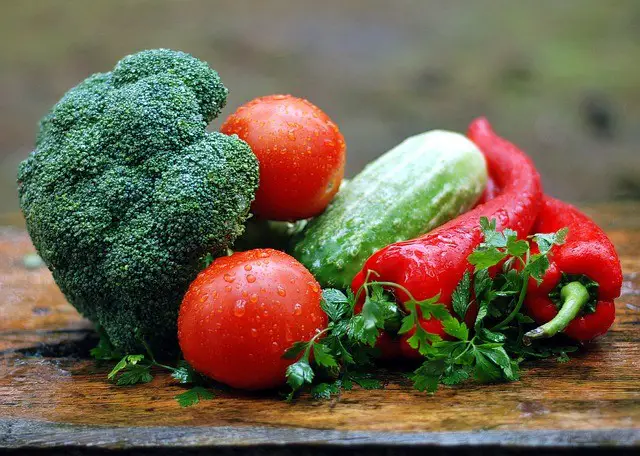
This is a hybrid baby made from eating plant-based and consuming a high-fat diet. The keto diet may encourage the consumption of animal products as a source of fats and protein, but once you go vegan, all this is prohibited.
Here are a few types of plant-based diets that you can pair with your ketogenic diet on your vegetarian keto lifestyle.
- Vegan diet: completely prohibits any animal products, including honey and eggs.
- Lacto-vegetarian: You will avoid seafood, eggs, and poultry. The only animal product you can consume is dairy products.
- Lacto-ovo vegetarian: This one is similar to the Lacto-vegetarian diet. The main difference is here you can eat your eggs, in addition to dairy products.
- Pescatarians: if you’re looking for the most flexible vegetarian diet, you’ve found it! You can eat practically every animal product, including eggs, seafood, and dairy, except meats.
The keto diet may best be suited for more flexible plant-based diet options. This is because the wide variety of non-starchy veggies will keep your total carbs intake low, while animal products will provide you with protein and healthy fats.
High Protein Ketogenic Diet
All ketogenic diets focus on increasing fat intake, but this one shifts dietary intake to protein-rich foods. The high-protein keto diet is most suitable for the elderly and bodybuilders who want to preserve lean muscle mass. The difference between this diet and other traditional ketogenic diets is caloric intake from protein is 30%.
The intake of carbs remains at 5% of the calorie consumed and fats at 65%. Burning of body fat isn’t as high as in traditional ketogenic diets, since protein stores are higher hence takes longer for the body to achieve ketosis. Something to note is, the high-protein keto diet is not suitable for individuals with kidney issues.
The next stop on our keto guide is the benefits of eating keto!
Keto Guide: Health Benefits of the Ketogenic Diet
The most important aspect of the keto guide is why you should eat keto. Here we will discuss weight loss and other benefits of the ketogenic diet. This is the point I win you over to the keto diet lifestyle, so I am bringing my A game!
Helps You Lose Weight
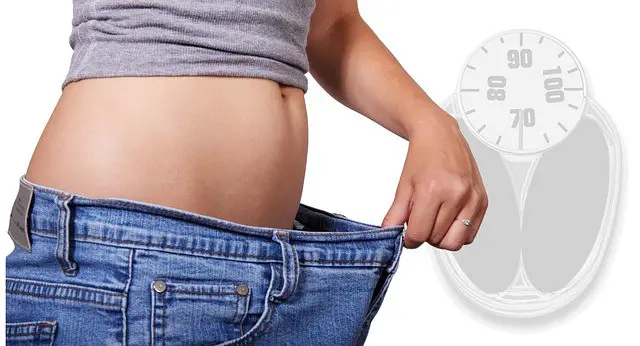
I believe this is why the ketogenic diet has hit headlines, with your favorite Instagram influencers and movie celebrities swearing by it. The keto diet promotes weight loss by improving body composition and body fat percentage. Studies have shown that the keto diet is more effective than a low-fat diet when it comes to weight loss.
Another study was done to investigate the effects of eating a low carb vs a low-fat diet on weight loss resulting in more weight loss for individuals on low-carb diets (3.3 kgs) than those on a low-fat diet (1.4 kgs) over 6 months.
The best part about a very low carbohydrate diet is it promotes losing weight by enhancing fat loss from visceral tissue and skeletal muscle without compromising lean mass.
Blood Sugar Regulation
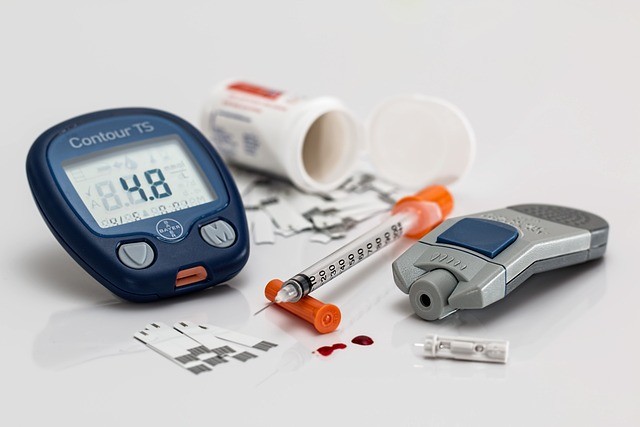
The ketogenic diet is a good lifestyle choice for diabetics because it addresses the root cause of the disease, insulin resistance. Lowering the intake of carbs and increasing the intake of fats will reduce blood sugar levels and increase ketone levels. A reduction in blood sugar translates to low insulin levels, while still getting the energy your body needs from ketones.
Much research has been carried out to investigate the effects of the ketogenic diet on glycemic metabolism and insulin resistance. After consuming a keto diet, fasting blood sugar decreases by 1.29 mmol/L, and hemoglobin A1c is lowered by 1.07.
Why is a low-carb, high-fat diet an interest in managing insulin resistance and metabolic syndrome? Obesity and high consumption of food promote carb intolerance and weight gain which further translates to hyperinsulinemia or insulin resistance. Insulin resistance inhibits fat oxidation and increases the storage of fat which causes dyslipidemia.
Dyslipidemia is characterized by high triglyceride levels (hypertriglyceridemia), low high-density lipoproteins (HDL cholesterol), and increased levels of low-density lipoproteins (LDL cholesterol). Adhering to a keto diet for at least two years has been shown to reverse dysglycemic, inflammatory, and metabolic biomarkers and reduce the risk of atherosclerosis by 10 years.
Promotes Brain Health

Your brain’s preferred source of energy is ketones. Some parts of your brain need carbs to function while others will do alright with just ketones as their fuel.
Most people argue that eating low carb may affect your brain because you are deprived of glucose. Your brain will function just fine if you consume 50 g of carbs, only if you are getting enough healthy fats and high-quality proteins.
Your body can synthesize glucose from non-carbohydrate substrates like protein and fats through gluconeogenesis. Studies have shown that intake of a keto diet promotes cognitive function and can be effective in the treatment of mild cognitive impairments like Alzheimer’s disease.
A study was done on male military personnel to investigate the effects of a keto diet vs a carb-based diet for 2 weeks and showed an improvement in psychomotor vigilant task performance, running memory performance, and fatigue and vigor.
When it comes to mild cognitive impairments, the keto diet is a feasible treatment for Alzheimer’s disease. This is attributed to the fact that the brain neurons prefer ketone bodies to glucose.
Glucose metabolism may reduce with age, but ketone body breakdown does not. The ketogenic diet reduces insulin levels enhancing fatty acid oxidation, which raises ketone levels.
Furthermore, the keto diet can delay the onset of dementia thanks to its decreased systemic inflammation benefit. More studies done to investigate the effects of a low-carb, high-fat diet on longevity and memory have shown that a non-obesogenic keto diet can improve memory, life span, and survival.
So, is this discussion on the keto diet for brain and cognitive function relevant in your keto guide? Food for thought!
Improves Heart Health
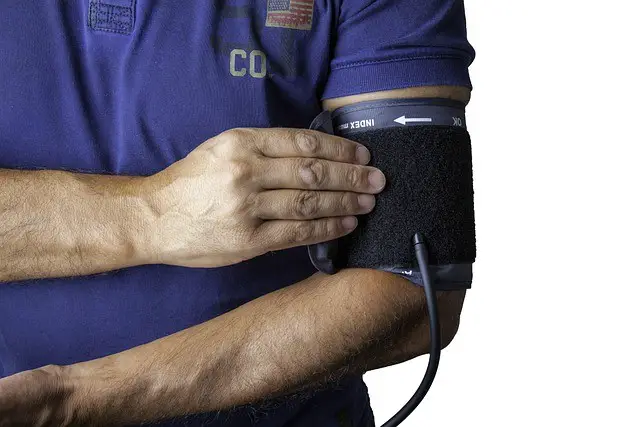
Your keto guide wouldn’t be the ultimate guide if we didn’t discuss keto diets and cardiovascular biomarkers. Since time immemorial fat has had bad press and has been associated with increased risks of heart disease. But things have changed, with people focusing on the quality of your fats rather than the number of fats you consume.
Keto diets allow for the consumption of good fats that increase levels of good cholesterol and lower levels of bad cholesterol in the body. Before mentioning the benefits of the ketogenic diet to your heart, allow me to educate you on cholesterol so that I can drive the point home better!
Lipid Profile 101
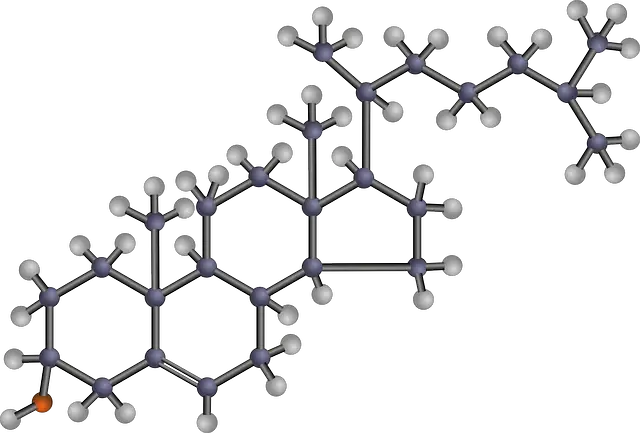
When you want to check your lipid/ cholesterol levels, there are three biomarkers you will pay attention to. Your lipid profile has three types of lipids to pay attention to as cardiovascular biomarkers in the body. They include:
- High-density lipoproteins: these are the good kind of cholesterol or lipids that carries all the bad kind to the liver to be reused or excreted. These in high amounts lower risks of heart disease.
- Low-density lipoproteins: here is where our red flags hang highest! However, it is important to mention that there are two types of bad cholesterol, one harmful and the other poses no threat to your heart health.
LDL lipids are categorized into large buoyant LDL and small dense LDL. The former is large and fluffy and easily goes through your arteries making it less dangerous. The latter, on the other hand, are small and high in number increasing risks of deposition on the arterial wall.
- Triglycerides: Triglyceride levels also affect your lipid profile. The higher the amounts of these fats, the higher your risk of cardiovascular disease.
Okay, now let’s come back to the ketogenic diets and heart health. The type of fat you consume will affect the lipid levels of the above cholesterol in your body.
High intake of trans fat and excessive consumption of saturated fat increase levels of bad cholesterol and lowers those of good cholesterol. Moderate intake of saturated fats and fatty foods rich in monounsaturated and polyunsaturated fatty acids (MUFAs and PUFAs) and medium chain triglycerides (MCTs) will increase the good cholesterol and reduce bad cholesterol in the body.
Relevance to your heart, you ask. Trans fats and too much-saturated fat are difficult to digest, so they end up being deposited on the walls of your arteries as plaque. This plaque narrows your blood vessels, causing high blood pressure. Once this plaque breaks off from arterial walls and circulates in your blood, it can bring about a blockage, leading to heart attacks and strokes.
What are studies saying about the ketogenic diet and your heart? A study on the effects of a Spanish ketogenic Mediterranean diet as a cardiovascular diet for obese patients show a significant reduction in diastolic blood pressure, systolic blood pressure, total cholesterol, and triacylglicerols.
There was also a decrease in low-density lipoproteins from 114.52 mg/dl to 105.95 mg/dl and a significant rise in high-density lipoproteins from 50.1 mg/dl to 54.57 mg/dl. Triglyceride levels lowered by 47.91%.
Reducing your net carbs will lower the amount of excess blood sugar converted to fat in the body lowering risks of obesity, a risk factor for high blood pressure and heart disease.
Anti-inflammatory Properties
Consuming a ketogenic diet improve mitochondrial function. It reduces mitochondrial respiration further reducing oxidative stress. The anti-inflammatory properties are achieved through reduced production of reactive oxygen species.
In terms of neuroinflammation, the keto diet promotes neuroprotective mechanisms against neurological disorders like Parkinson’s disease, epilepsy, spinal cord injury, Alzheimer’s disease, and migraines.
Reduce the Progression of Some Cancers
Your diet can influence the development of cancers in your body. Studies done investigating the effects of intermittent fasting and the keto diet in cancer progression showed that fasting and the keto diet were feasible and tolerable in cancer treatments.
One study investigated the effects of the keto diet in intermittent fasting on T-cell-dependent tumor growth retardation. The principal ketone body produced on keto, 3-hydroxybutyrate (3HB), showed therapeutic responses against aggressive tumors.
The 3HB ketone upregulation of PD-L1 on myeloid cells while favoring CXCR3+ T cells brings about antitumor effects. The ketogenic diet also changes the composition of gut microbiota, especially Eisenbergiella massiliensis prevalent in low-carb diets, which increases the serum concentration of 3HB slowing tumor progression.
More studies are being done to investigate the effects of the ketogenic diet on cancer treatment and progression.
Anti-aging Properties
The keto diet preserves memory and reduces midlife mortality. Consuming low-carb diets prevent neurodegenerative disorders brought about by aging by mitigating the impact of encroached hypermetabolism by switching fuel sources from glucose to ketones.
The keto-speed diet also allows for autophagy which promotes anti-aging. Autophagy is the process by which your body breaks down old worn-out cells and used their component to generate new healthier cells. This process generally improves your body’s metabolic health.
Helps Manage Symptoms of PCOS
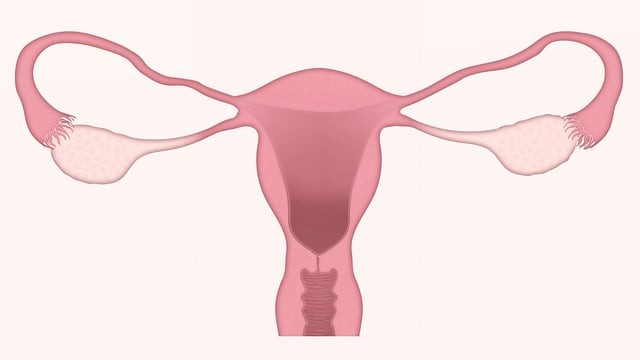
Most people ask, is keto good for PCOS? Good news to women suffering from the polycystic ovarian syndrome, commonly known as PCOS. The root cause of PCOS is inflammation, which the keto diet takes care of by removing carbs.
Insulin resistance is a risk factor for both PCOS and diabetes mellitus. Lowering carb intake reduces weight gain and triggers the body to use fat for energy. Weight loss increases insulin sensitivity, lowering risks of type 2 diabetes and PCOS.
Moreover, a low-carb, high-fat diet improves liver function in women suffering from PCOS. Eating keto increases HDL cholesterol and lowers LDL cholesterol improving their lipid profiles.
Improves Mental Health

Reducing carb intake can improve your mood, and reduce anxiety, stress, and depression. Recent research is looking into the ketogenic diet as metabolic therapy for mood disorders. The improvement of mood disorders on keto is associated with changes in monoamine levels, mitochondrial biogenesis, and function, lowered oxidative stress and inflammation, and improved insulin dysfunction.
Better insulin and blood sugar control can also improve your moods. When your blood sugars are stable, you have better control of your moods. Consuming the keto diet has also been considered a potential diet therapy for depression due to its gut microbiome regulation and role in the gut-brain axis and neurotransmitter levels.
Positive GABA modulators are drugs prescribed to manage depression, although in a limited dosage to lower the risks of addiction. The ketogenic diet can increase GABA levels increasing the mechanism of action of monoaminergic drugs.
Your diet of choice shouldn’t only be about counting calories and losing weight loss, it should benefit your metabolic health and mental and psychological health.
Appetite Suppression and Increased Energy Expenditure
In addition to fat-burning benefits, another thing you can enjoy from eating keto is reduced appetite which lowers the intake of food, reducing weight gain. Being in ketosis regulates the concentration of hormones involved in hunger and satiety control.
The hormones involved in hunger and satiety control are leptin and ghrelin, the former being the satiety hormone and the latter being the hunger hormone. Leptin is a hormone produced by your fat cells that tells your brain, “that’s enough, we’re full!” The more fat cells you have, the more leptin you have.
This can make you wonder, now that the ketogenic diet lowers fat mass, won’t leptin levels reduce, and appetite be stimulated? No, the keto diet has been shown to lower leptin resistance and improve leptin sensitivity.
Keto suppresses the hunger hormone, ghrelin because nutritional ketosis slows down the increase in ghrelin concentration compared to when you’re not undergoing ketosis. Increased levels of ketones decrease hunger levels, as observed in this study investigating the consumption of ketone ester drinks on appetite. Stable levels of this hormone lower carb cravings and reduce feelings of hunger.
Skin Health Benefits
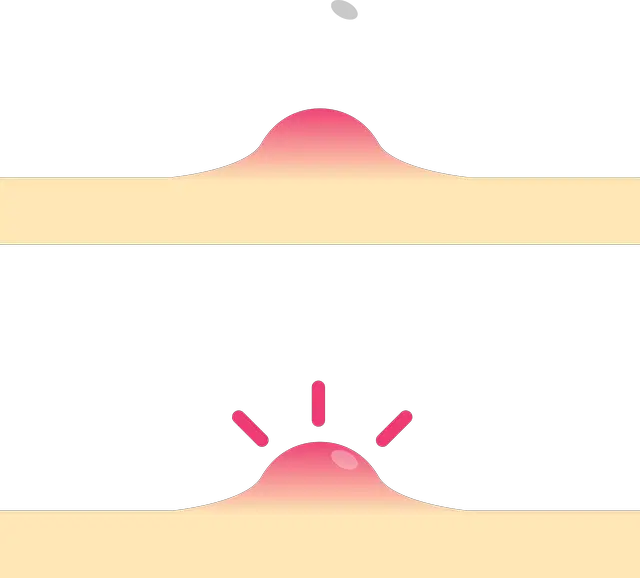
Research has looked into the effects of ketogenic diets in the treatment of acne. This is due to its positive impact on skin aging through the regeneration of new skin cells. The ketogenic diet also reduces inflammation further decreasing acne formation on your skin.
A study comparing the effects of a low glycemic load diet and a high glycemic load diet on acne vulgaris showed a decrease in total lesion counts in individuals consuming a low-carb diet. More studies are needed to understand the role of carbohydrates in acne pathogenesis.
Improves Other Health Conditions
The keto diet can also be used to improve other health conditions like fatty liver disease. A study was done to investigate the consumption of a low-carb, low-calorie diet improved symptoms of liver fibrosis and hepatic steatosis. It also improves symptoms of epilepsy and other neurodegenerative diseases.
Okay, we have covered an important section on our keto guide, now let’s spring into action! We’re going to discuss the do’s and don’ts of the keto diet, in terms of what you can eat and what you should avoid on a keto diet.
What Foods Can You Eat on A Ketogenic Diet?
Here are foods you can incorporate into your keto diet recipes that will trigger and maintain ketosis. I have categorized the keto-friendly foods into the following food groups:
Healthy Fats and Oils
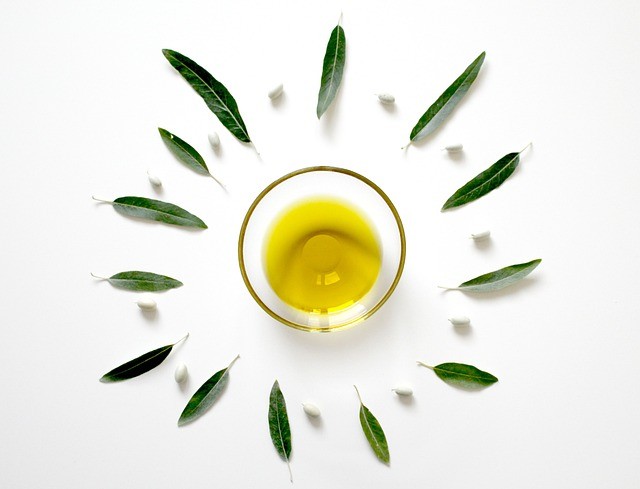
Remember when I mentioned MUFAs and PUFAs and MCTs above when talking about heart health? Well now let’s talk about which foods will provide you with these healthy lipids on a keto diet.
You are allowed to consume saturated fats in moderation to lower the risks of heart disease. On keto, coconut oil, kernel oil, butter, ghee, and palm oil are healthy oils rich in saturated fat that you can consume. Coconut oil is specifically highlighted because it is rich in MCTs which are broken down to produce ketones.
Oils rich in MUFAs and PUFAs are considered healthy because they improve your lipid profile. Canola oil and olive oil are oils rich in these fats. Other foods rich in these fatty acids include seed oils, nuts, and fatty fish.
The American Heart Association recommends not getting more than 10% of your daily calories from saturated fats. You are better off consuming foods rich in MUFAs and PUFAs.
Nuts and Seeds
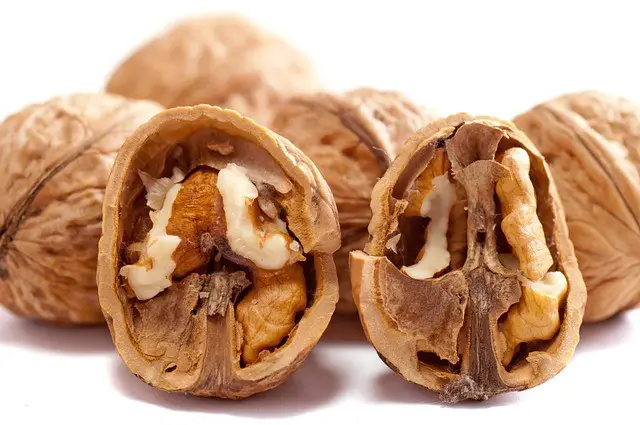
Nuts and seeds are a great source of good fats in your keto diet. You can incorporate them in form of oils in your keto recipes, or as toppings for your smoothies or as snacks.
Keto-approved seeds are hemp seeds, flaxseeds, pumpkin seeds, chia seeds, and sunflower seeds. Nuts you can enjoy on a ketogenic diet are macadamia nuts, Brazil nuts, almonds, pecans, cashews, and pistachios.
Consuming 50-60 g of seeds and nuts 4 times a week decreases your chances of developing nonalcoholic fatty liver disease (NAFLD) by 15%.
Low-carb Vegetables

The keto diet restricts carb intake to 20-50 g, which is made possible by consuming high amounts of low-carb vegetables. Consuming non-starchy vegetables ensure you never go below 20 g of carbs while on keto. Here are the vegetables you can eat on a ketogenic diet:
Low Carb Vegetables
- Lettuce
- Kales
- Bok choy
- Green and red bell peppers
- Eggplant
- Green beans
- Broccoli
- Celery
- Cucumber
- Zucchini
- Cauliflower
- Spinach
- Tomatoes
- Brussels sprouts
- Asparagus
- Cabbage
Medium Carb Vegetables
- Artichokes
- Yellow bell peppers
- Beets
- Green peas
- Carrots
- Onions
- Celeriac
You can consume low-carb veggies in high amounts but moderate consumption of medium-carb veggies. Why are low-carb vegetables recommended?
- They are low in carbs depriving your body of glucose-enhancing fat-burning.
- Non-starchy veggies are rich in nutrients like vitamin K, potassium, iron, and vitamin C which are necessary for overall health.
- Your veggies are high in fibers that promote satiety by reducing digestion and absorption of foods. This slows down the release of glucose into the bloodstream increasing insulin sensitivity.
- High fiber and low carb content can help improve lipid profile by triggering fat metabolism.
- High consumption of low-carb vegetables has been shown to reduce oxidative stress. Plants contain phytochemicals like flavanols and polyphenols are antioxidants lowering inflammation.
So even as you are focusing on increasing fat intake, ensure you keep your carbs within limits by consuming your salads or green smoothies.
Avocados
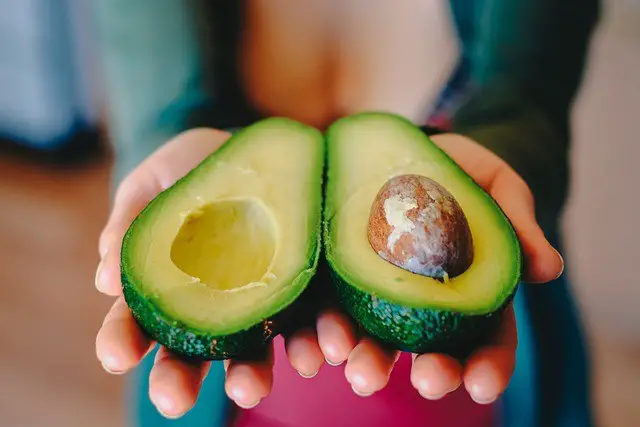
Avocados are one of the few fruits allowed on the ketogenic diet because they are rich in good fats. When we talk about heart health, the avocado is perfect for you! It is rich in potassium and MUFAs that are involved in improving heart health.
Berries
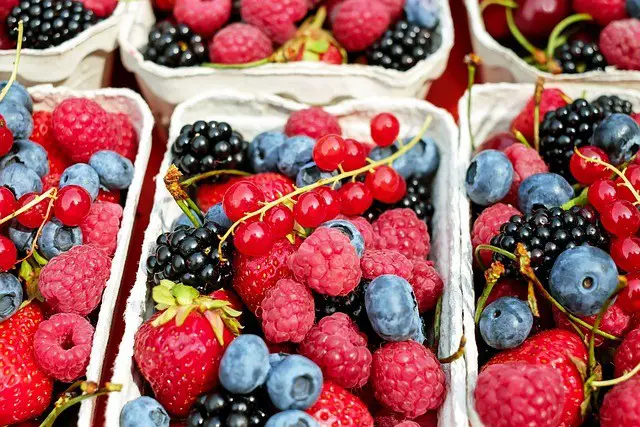
Yes, yes, yes! You can have berries on a ketogenic diet. Blackberries, blueberries, raspberries, and strawberries are low in net carbs and will help you trigger ketosis.
Other fruits allowed are lemons, watermelons, and cantaloupes.
High-quality Proteins
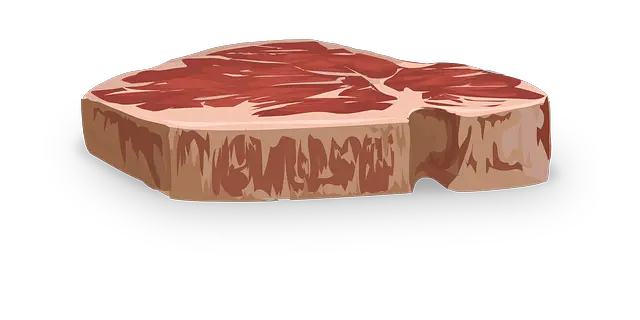
High-quality proteins will maintain lean mass when your body breaks down fats. Which proteins are allowed on keto?
Eggs

Eggs are a rich source of protein and are high in cholesterol. Eggs are a must-have in your keto diet, because of the egg yolk. Although high in cholesterol, the yolk contains components that can help regulate your lipid profile.
Egg yolk contains choline and lecithin that help move cholesterol out of your body. It also contains zeaxanthin and lutein, phytonutrients, that lower small dense LDL cholesterol and increase levels of large buoyant ones. Another essential component of yolks is vitamin K2 which moves calcium from arterial walls to your bones.
Meat and Poultry
Fresh meat and poultry are allowed when eating keto as sources of protein. To maintain lean mass, don’t forget your chicken!
Seafood and Fatty Fish
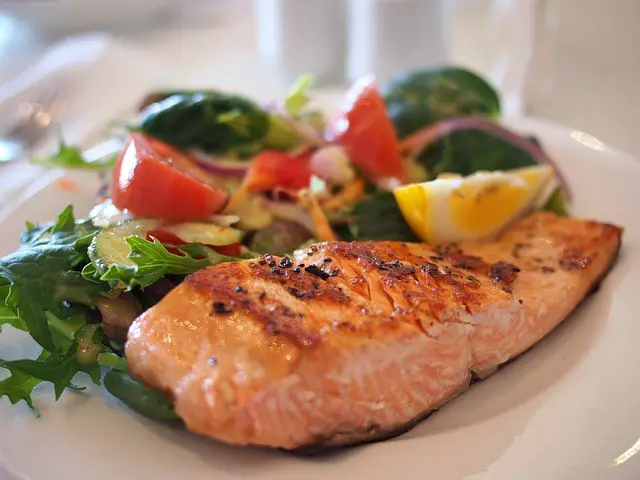
Kinds of seafood and fish are good sources of not only proteins but healthy fats as well. Seafood like shrimp, prawns, salmon, herring, mackerel, anchovies, sardines, tuna, and oysters are all keto-friendly.
Seafood, especially fatty fish is rich in omega-3 and low in omegs-6 fatty acids which lower inflammations, promote lipid profile and improve brain function.
The American Heart Association recommends consuming 8 ounces of fish or incorporating fatty fish into your diet twice a week.
High-fat Dairy Products

One of the best ways of increasing your fat intake is by adding high-fat dairy products to your diet. Cheese like blue cheese, goat cheese, parmesan cheese, cream cheese, and cottage cheese is allowed on keto.
Plain yogurt is also another dairy product allowed on keto. Greek yogurt is rich in microbiota which helps regulate microbiome homeostasis. It is also rich in calcium increase energy loss, lowers hunger and cravings, and promotes weight loss.
Heavy cream, butter, and ghee are other dairy products you can use when preparing keto-friendly meals.
Dark Chocolate
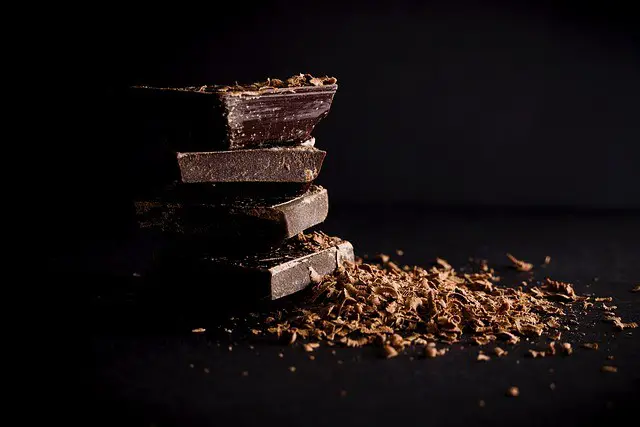
Before reaching out for a bar of chocolate on your supermarket shelf, check on the type of chocolate it is. Dark chocolate, unlike the white variety, is high in cocoa content than milk.
Dark chocolate has been shown to possess many health benefits including lowering cholesterol levels, anti-inflammatory properties, blood pressure control, and improve brain function.
Having a bar of dark chocolate can also improve your mood and insulin sensitivity and lower stress levels. All these benefits are thanks to cocoa!
Unsweetened Coffee and Tea

Unsweetened coffees and teas are allowed on the ketogenic diet because they are zero carbs and zero calories. Dark coffee, Americano, and Espresso are coffees allowed on keto.
Unsweetened teas are keto! They are rich in antioxidants that reduce inflammation and oxidative stress. Green tea, black tea, and herbal teas are allowed on low-carb diets.
With these two, what you add to your beverage will contribute to the net carbs you consume. So keeping your tea or coffee as natural as possible is best.
Non-glycemic Sweeteners

Lots of controversies arise when it comes to sweetening your foods and beverages on keto. You are allowed to use low-carb sweeteners that will not spike your blood sugar when added to foods.
The sweeteners you can use on keto are Stevia, monk fruit sweetener, Allulose, Inulin, and tagatose won’t inhibit ketosis. Remember, don’t use these sweeteners when you’re starting to lower your carb cravings. Vanilla extract without added sugar can also be a good sweetener on keto.
You know what to eat, so the next thing to tackle in our keto guide is what to stay away from on the keto diet.
What Foods Should I Avoid on Keto?
Here’s a list of foods you should stay away from to maintain ketosis:
- Root vegetables like sweet potatoes, yams, and cassava.
- Whole grains
- All the other fruits and fruit juices
- Sweetened beverages like coffee and flavored teas
- Sugar and high-sugar sweeteners
- Processed meats like sausages and deli meats
- Milk
- Unhealthy fats and oils from junk foods, processed foods, and vegetable oils
- Gluten-free foods
What Do You Eat on the First Week of Keto?
Nonstarchy vegetables, dairy products, meats, poultry, seafood, nuts, and seeds are a good place to start when you are at the beginning of your ketogenic diet journey.
Once your body is used to ketosis, and the symptoms of the keto flu have subsided, then you can add moderate-carb veggies, dark chocolate, and non-glycemic index sweeteners. This will ensure you keep your carb cravings in check.
Do You Eat 3 Times A Day on Keto?
Others prefer eating 3 meals a day, while others swear by small frequent meals, that is three small main meals and two or three snacks spread out throughout the day. Every time you eat a meal insulin is produced.
So on keto the lesser the food you consume in one sitting the better for your blood sugar and insulin levels.
If you are eating three meals a day, focus on foods with a low glycemic index and load that will not increase insulin levels fast.
How Much Water Should I Drink on Keto?
The basic rule is dividing your body weight by two to get how many ounces of water you should consume while on a ketogenic diet. It is important to stay hydrated on keto because water loss is increased during ketosis as the body tries to excrete ketones through your urine.
Does A Cheat Day on Keto Help?
Stay away from cheat days while on a ketogenic diet. You can try the targeted ketogenic diet that allows you to consume some amounts of carbs when working out. This way you will satisfy your carb cravings while increasing your chances of being in ketosis and fat burning.
What Puts You in Ketosis Fastest?
The fastest way to trigger ketosis is by exercising on a ketogenic diet. Low carb diet will trigger ketosis while physical activity creates a calorie deficit further promoting the burning of fat.
Bottom Line
When you want to start keto, lowering your carb intake should be a priority. Increase fat intake so that your body can have an alternative source of fuel while in ketosis. Being on keto requires patience, so go easy on yourself. Start small, then build to stricter versions of keto.
Was this keto guide helpful? Do you have any questions on the ketogenic diet you would like answered in this keto guide? Or is there a keto recipe you can vouch for and you would love to share with other keto dieters? Let me know in the comment section below!
